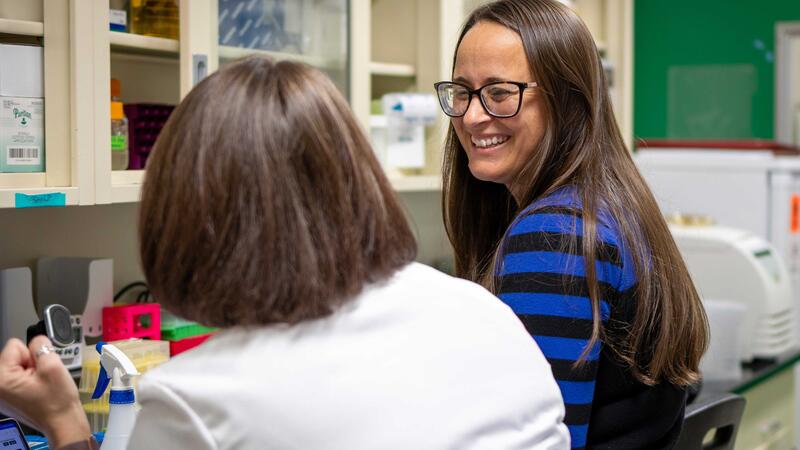News
Unraveling the mysteries of the plant microbiome
Three years after joining the Great Lakes Bioenergy Research Center, Michigan State University microbiologist Sarah Lebeis has been tapped to guide the center’s scientific research.
Brian Pfleger
Great Lakes Bioenergy Research Center researcher and University of Wisconsin-Madison Assistant Professor of Chemical Engineering Brian Pfleger explains what "fixed" carbon is.
Tom Jeffries is a scientist in the truest sense of the word. His passion for studying biofuel is evident as he describes is 40-year career in the field, yet he emphasizes that he is careful not to favor one technology over another.
Instead, Jeffries relies on pragmatism to guide his research.
Interview with Julie Sinistore, former GLBRC Sustainability researcher, who is now a Senior Life Cycle Analyst at Virent, Inc.
GLBRC: What was your role at GLBRC, and when did you work here?
Marginal lands – those unsuited for food crops – can serve as prime real estate for meeting the nation’s alternative energy production goals.
During the summer of 2012, our Research Experience for Teachers (RET) Program expanded to include collaborations between researchers and teachers both at UW-Madison and Michigan State University. We had four teachers working with GLBRC scientists on a range of research and curriculum development projects.
Read on to learn about the activities of each of the 2012 RET participants.
In most college classes, students are quizzed with questions and the professors already know the answer. But CS 699, a special topics course in Computer Science at the University of Wisconsin-Madison, turns that teaching method on its head: university scientists turn to students to help crack their toughest research questions.
On September 26, 2012, we hosted #LabChat Q&A: Biofuels of the Future with @ENERGY. The #LabChat features @GLBRC project leader Brian Pfleger, whose research focuses on synthetic biology and metabolic engineering. GLBRC Education and Outreach Director John Greenler moderated from @WI_Bioenergy.
Developing technologies to produce biofuels is a little like bargain hunting: the goal is to come up with a valuable product for a competitive price.
Kate Helmich
Great Lakes Bioenergy Research Center research assistant Kate Helmich explains what an enzyme is.
ow can GLBRC researchers be sure that successful fuel production at the lab bench can be scaled up to meet the needs of a state, a region or a country?





